Google still accounts for a major chunk of total internet searches, but the trend is changing fast, with more and more users turning to AI for everything from recipes and workout plans to making buying decisions.
Trying to optimize so your brand/product gets mentioned in AI responses is a good idea, especially since there's a possibility of the tide turning over to zero-click searches entirely. While LLMs are still quite unpredictable and LLM optimization is a budding field, marketers have managed to make decent headway, and specialized tools are emerging to help.
You'll notice a bewildering number of acronyms floating around the space: GEO, AEO, and the more popular LLMO. These will eventually consolidate into one, but what's important is that they all point to the same idea, so don't let it throw you off.
I've spent weeks hunting down and testing the best LLM optimization tools out there. Here are the platforms that impressed me most and could give your brand a real edge in AI search.
1. Surfer
Surfer offers an AI powered platform with tools built for both traditional “blue link” search results and the emerging world of large language model generated search results.
Surfer’s AI Tracker is designed for LLM optimization on platforms like ChatGPT and Perplexity. Besides monitoring how your brand appears across AI-generated results, Surfer also helps you optimize your pages to appear in AI search results.
The tool shows you three metrics.
- Mention Rate: how frequently your brand is cited,
- Average Position: your placement in AI responses, and
- Visibility Score: a combined measure of presence and ranking.
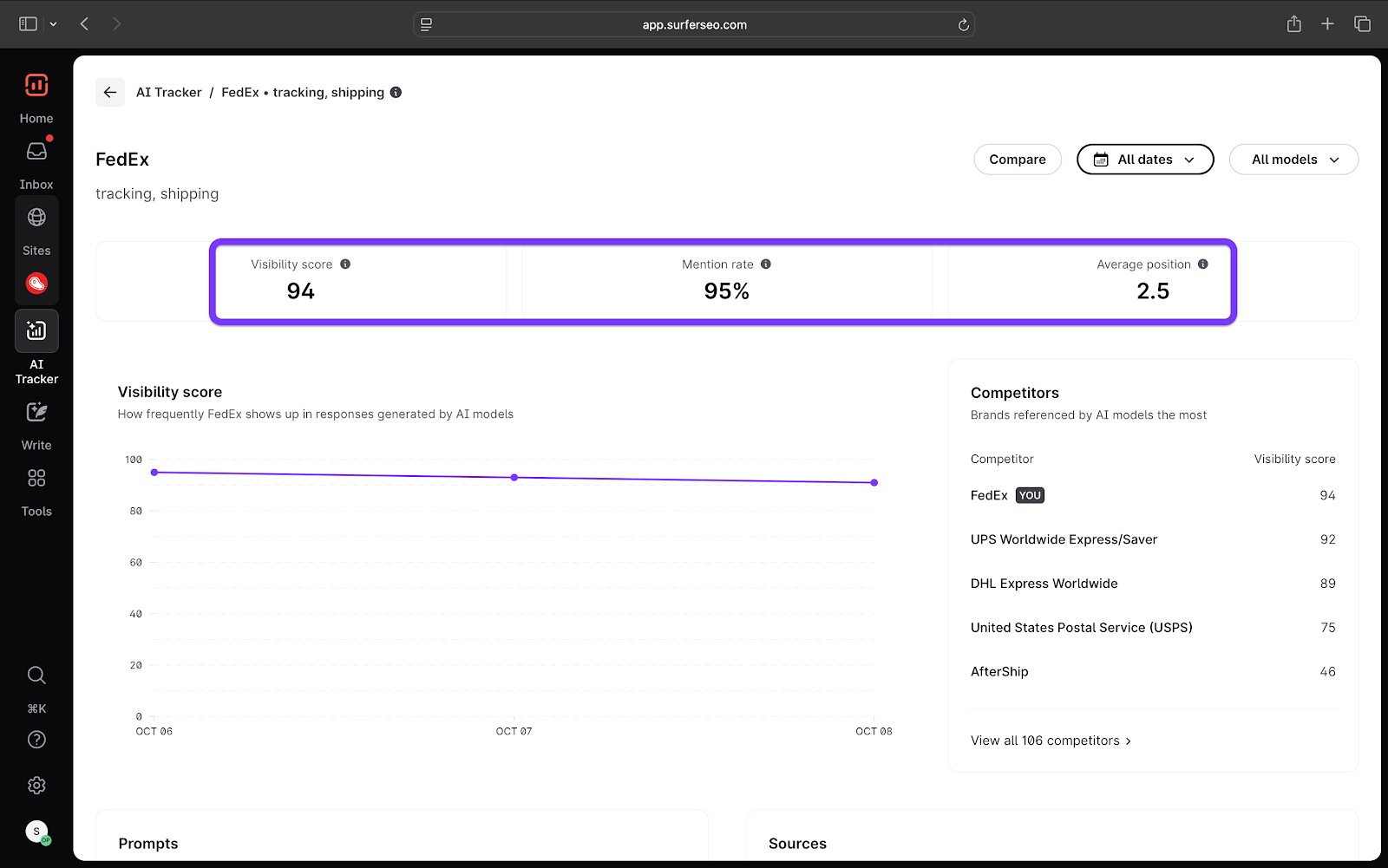
You can track competitors or see what other sources appear alongside your content across top LLM platforms like ChatGPT, Perplexity, and Google’s AI Overviews.
What’s especially exciting is the ability to track specific prompts that users are entering into AI platforms. You can add the prompts you want to rank for and monitor your LLM visibility for those exact phrases.
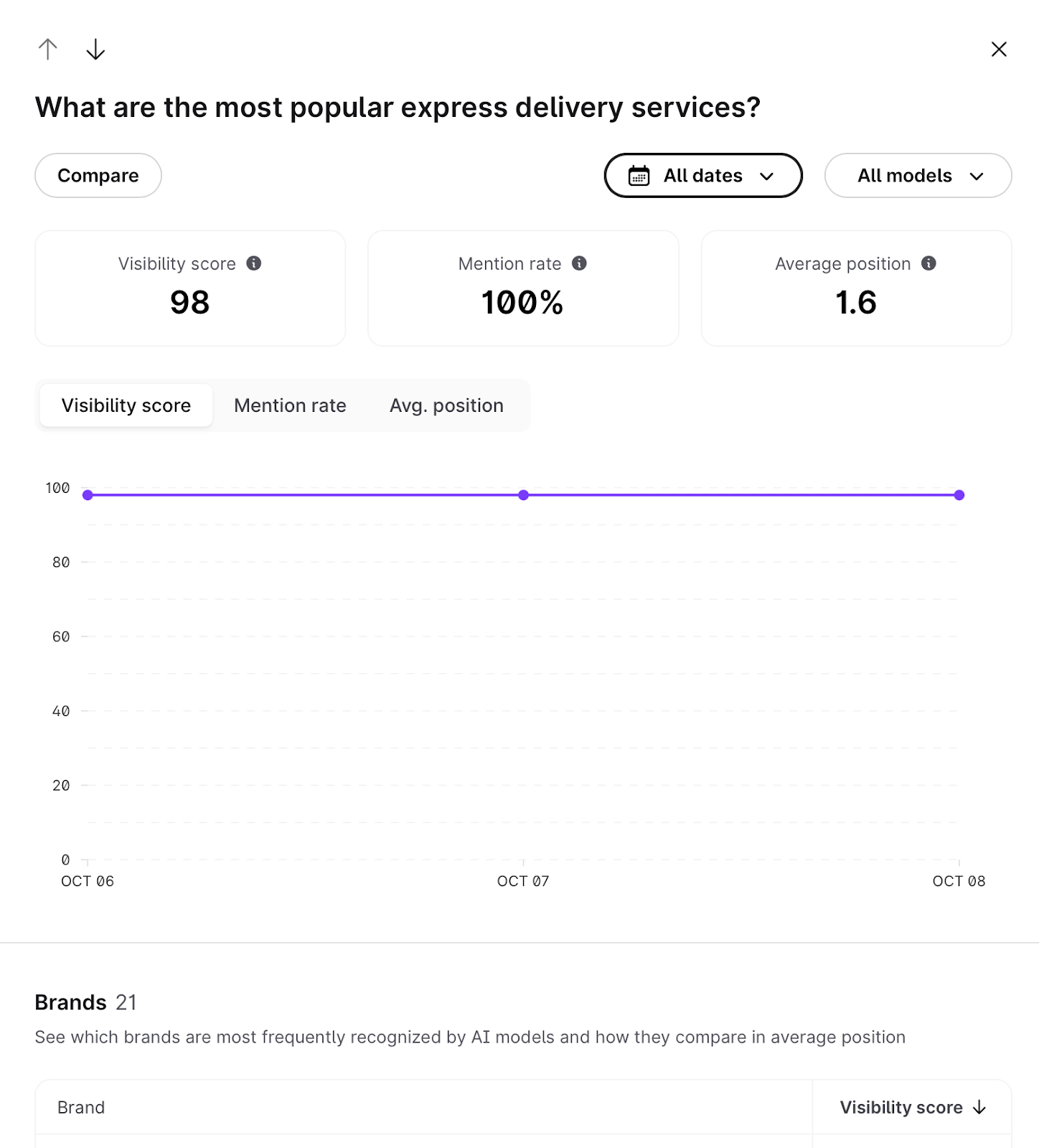
Given that platforms like ChatGPT and Perplexity draw at least partially from Google’s search index, optimizing for traditional SEO still matters. Surfer bridges that gap by helping you stay visible in both ecosystems.
Surfer’s Optimization Score provides guidance on using entities and contextual signals that improve your likelihood of appearing in AI answers.
And because Surfer handles everything from keyword research to content auditing and tracking, you don’t need to invest in multiple tools. You can research, optimize, and track performance for SERP and AI platforms all in one place.
2. Ahrefs Brand Radar
Ahrefs has long been a frontrunner in SEO, and with the launch of Brand Radar, they’ve taken their first step into the LLMO space.
Brand Radar sets itself apart from other AI search visibility tools by not limiting you to a few hundred custom prompts. Instead, it pulls data from a pool of tens of millions of prompts it has already been tracking.
So the moment you start monitoring your brand, Ahrefs shows you instant results based on it’s existing database. You can add your competitors (or let Ahrefs do it for you) and immediately get details like the percentage competitor share, your total mentions, impressions, and more.
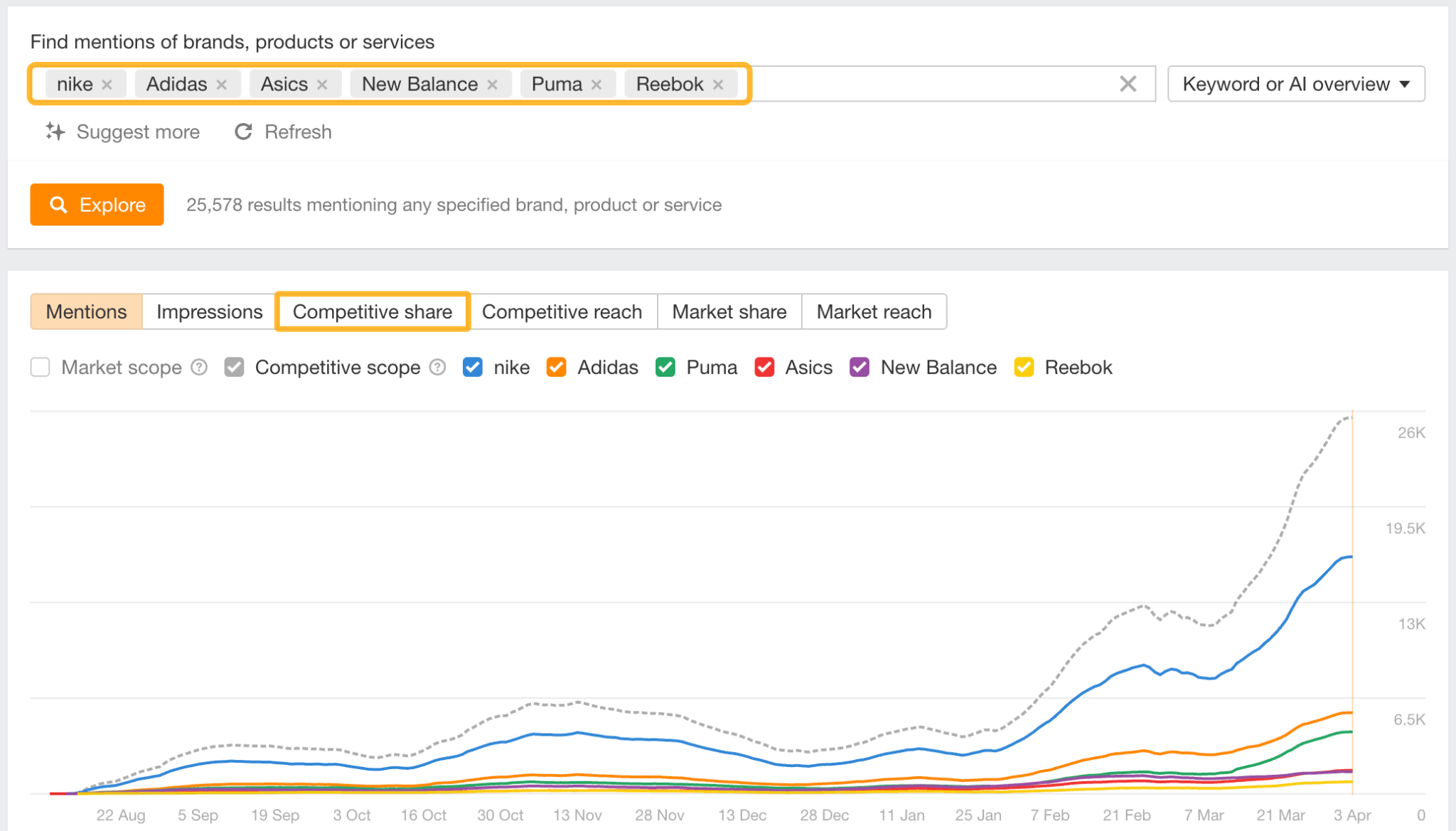
The downside is that they don't yet allow users to track custom prompts. But with the tool still in beta, it's likely we'll see that feature in one of the coming updates.
You can also use their filters to find prompts your competitors are ranking for, but you aren't, or to find prompts with specific words and phrases in them.
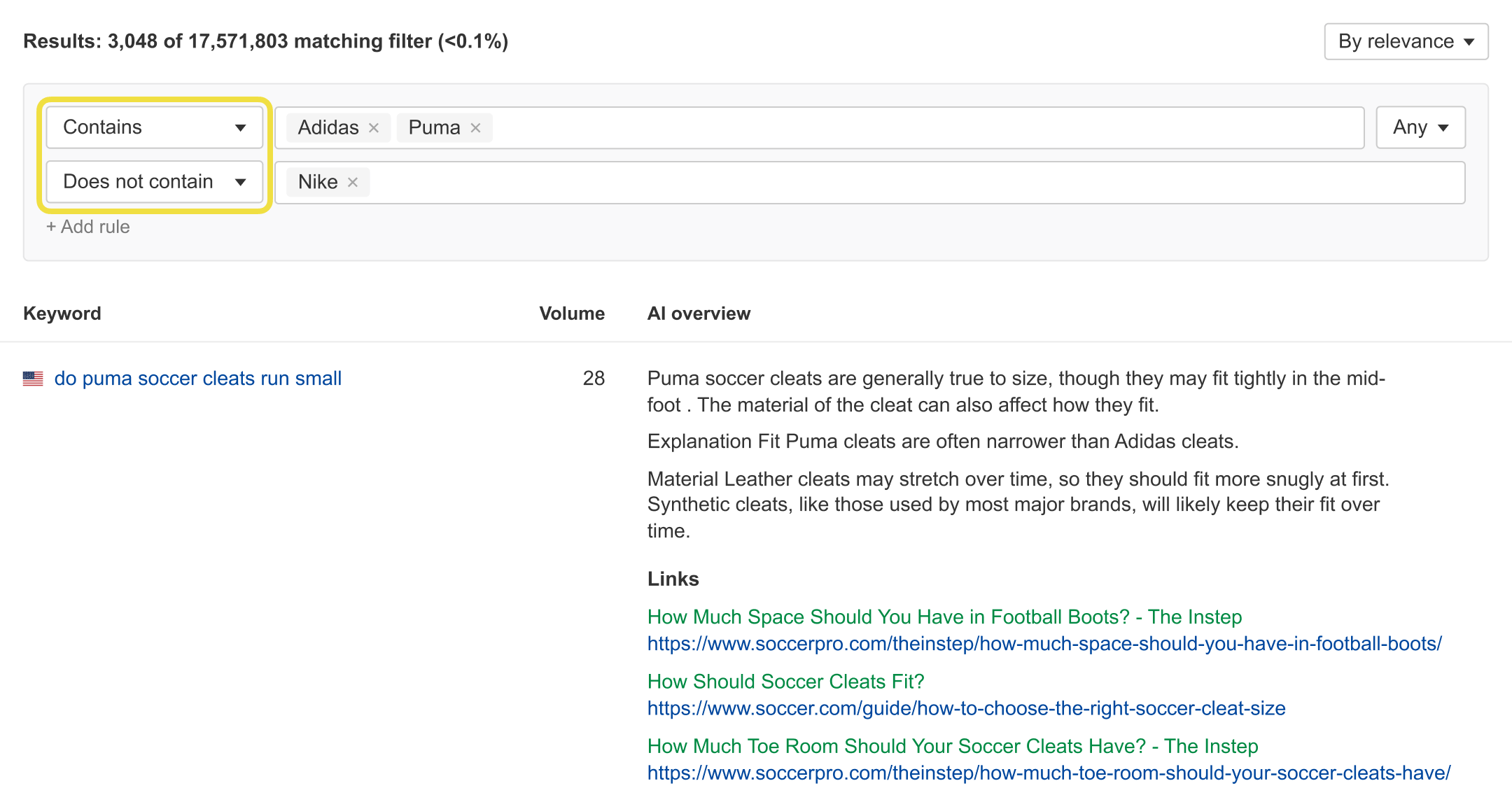
While Ahrefs does track citations for your website, it doesn’t go as deep as some other tools. You won’t see details like which competitors are being cited or how your share of mentions compares.
There’s also the question of how reliable the data is. Some users noticed that Ahrefs showed its own site as being mentioned only twice by ChatGPT, which feels pretty unlikely, all things considered. Given how new the feature is, bugs aren't too surprising, but it might be some time before the platform is fully ironed out.
Another major drawback that keeps Ahrefs from ranking higher on the list is the steep price, almost double that of most other LLMO tools on average. So, unless you have a company budget cushioning your tool subscriptions, you're looking at a significant monthly expense that can quickly add up.
3. AthenaHQ
AthenaHQ is another enterprise AI search visibility monitoring platform. The Roman theme extends just beyond the name; the main dashboard is called Olympus, and it’s where you get a bird’s eye view of how AI tools are surfacing your brand across responses.
You’ll see details like the total number of responses analyzed, sources tracked, your best and worst performing content, and the sources that get cited most often.
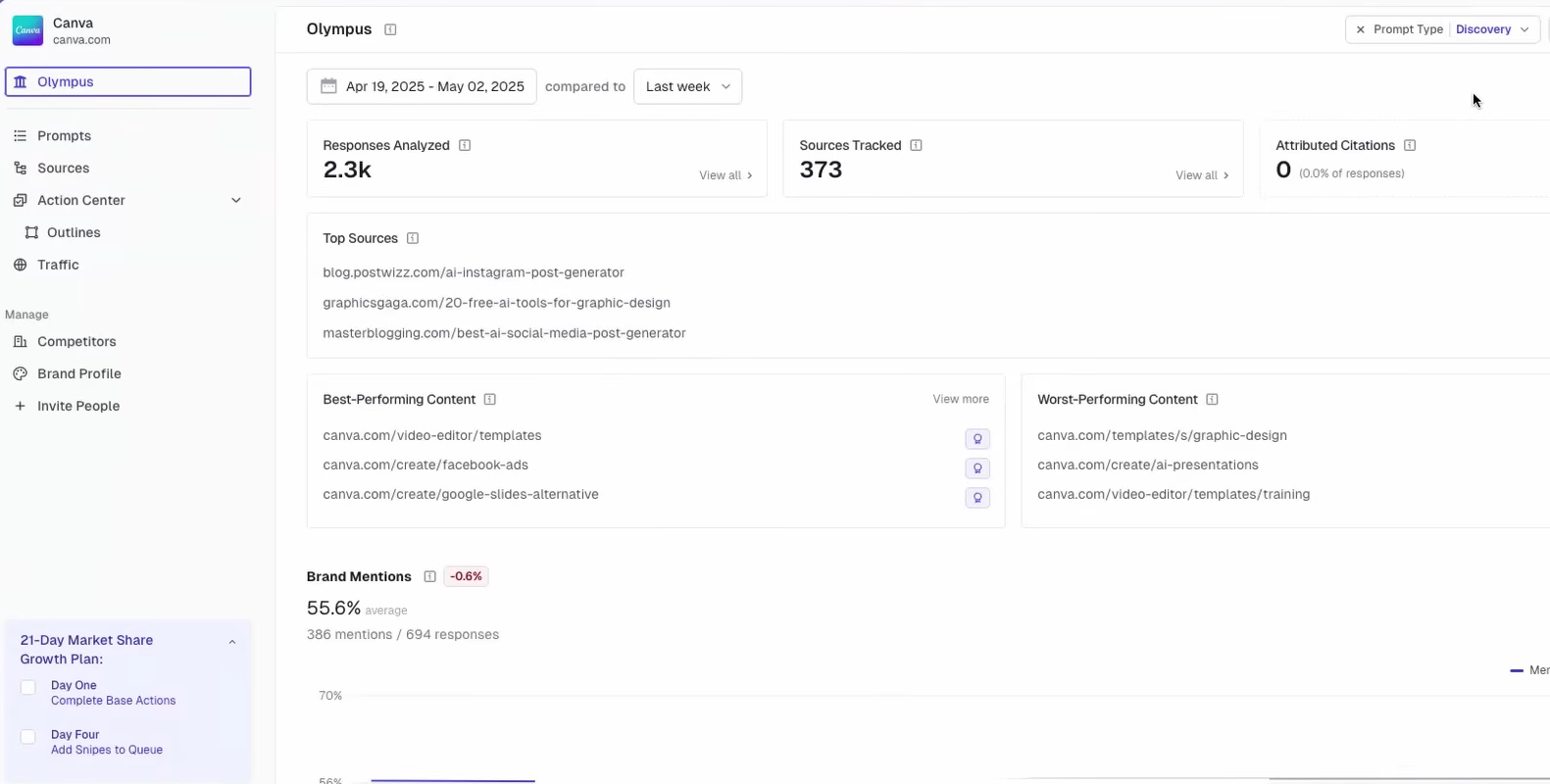
As you scroll down, you’ll find more insights into how the tool evaluates your site’s performance. This includes an overall GEO score, pie charts showing your Share of Voice compared to competitors, and a breakdown of which LLMs are driving the most traffic.
You can manage which prompts AthenaHQ tracks from the relevant tab on the left sidebar. You'll also get details on the prompts it's already run, including your brand mention rate, prompt type, and a sentiment score. Similarly, it tracks sources cited by LLMs for different prompts, visible in the Sources tab.
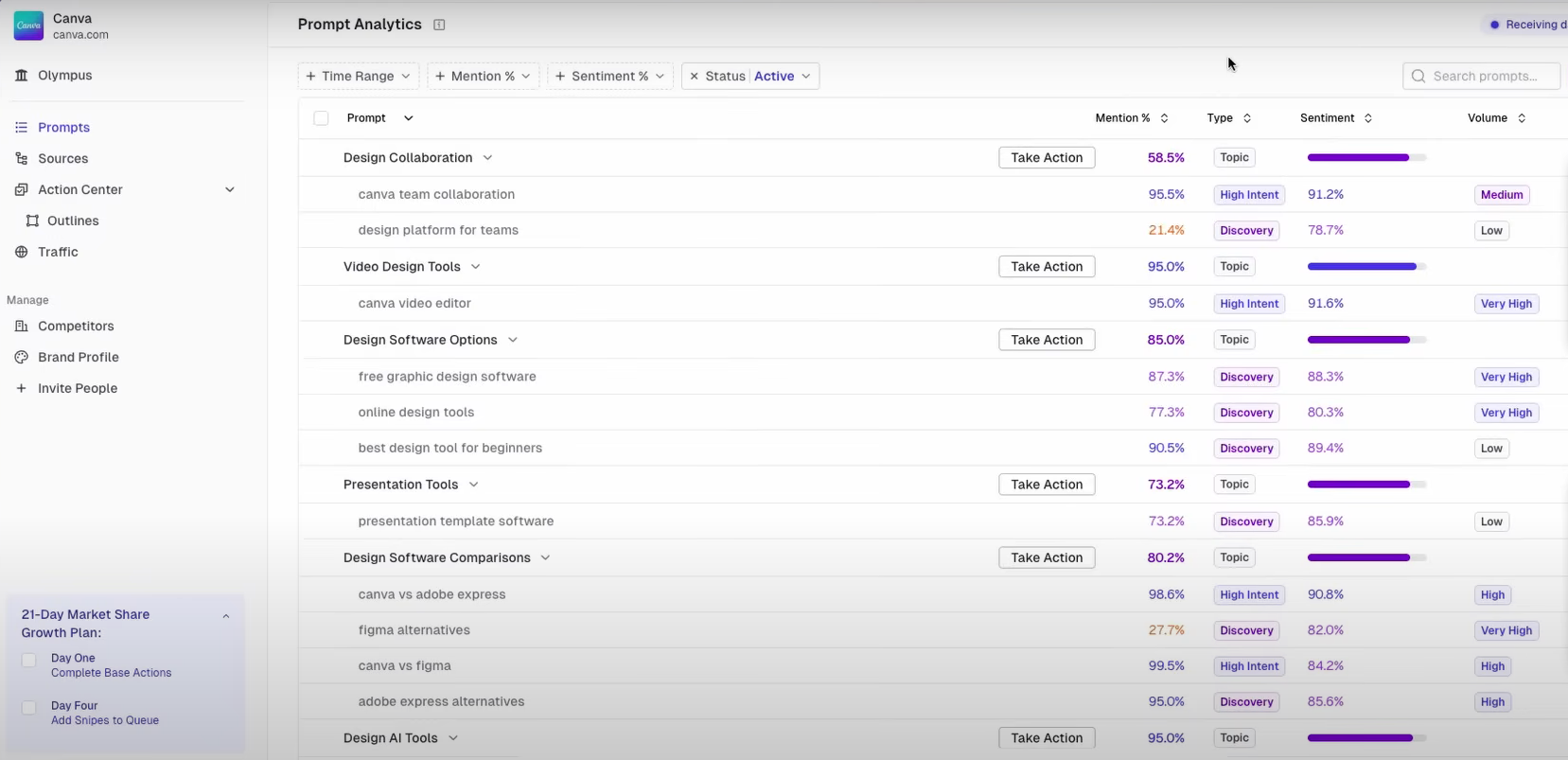
Most of these features are fairly standard across LLMO tools. What really sets AthenaHQ apart is the Outlines tab. It works a bit like a traditional SEO tool: helping you spot topic clusters that aren’t performing well, flagging which ones need attention, and even letting you draft outlines and create AI-generated content to improve your chances of ranking.
4. Gumshoe
Gumshoe tracks your brand visibility across different large language models. You start by entering basic brand details, including an analysis focus, which lets you define the types of prompts to track.
Once the analysis is complete, you’ll get a brand visibility score along with a breakdown of AI mentions for both you and your competitors. Where Gumshoe stands out is with its Persona Visibility Index. It acts as a specific type of user (like an ecommerce store owner) when prompting AI tools, so you can see how your visibility changes depending on who’s asking.
They also have a Topic Visibility breakdown that shows the various prompts fed to AI tools, divided by topics.
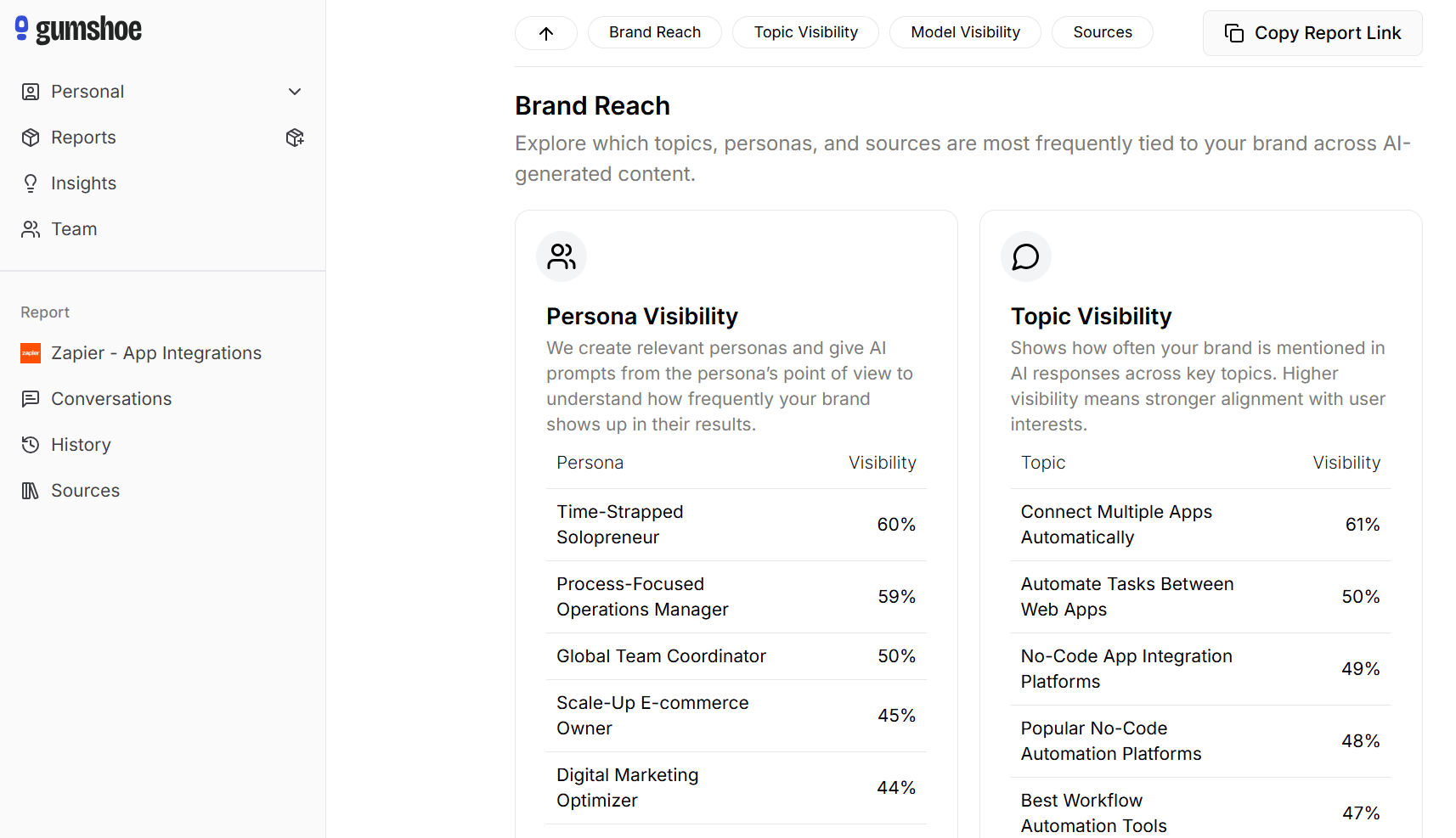
Sources are trackable, too. Gumshoe provides details on which websites were most cited by LLMs across different categories and how you compare. You can also go through the exact responses all major AI platforms gave to specific queries in the Conversations tab on the sidebar, this can be filtered by personas and topics.
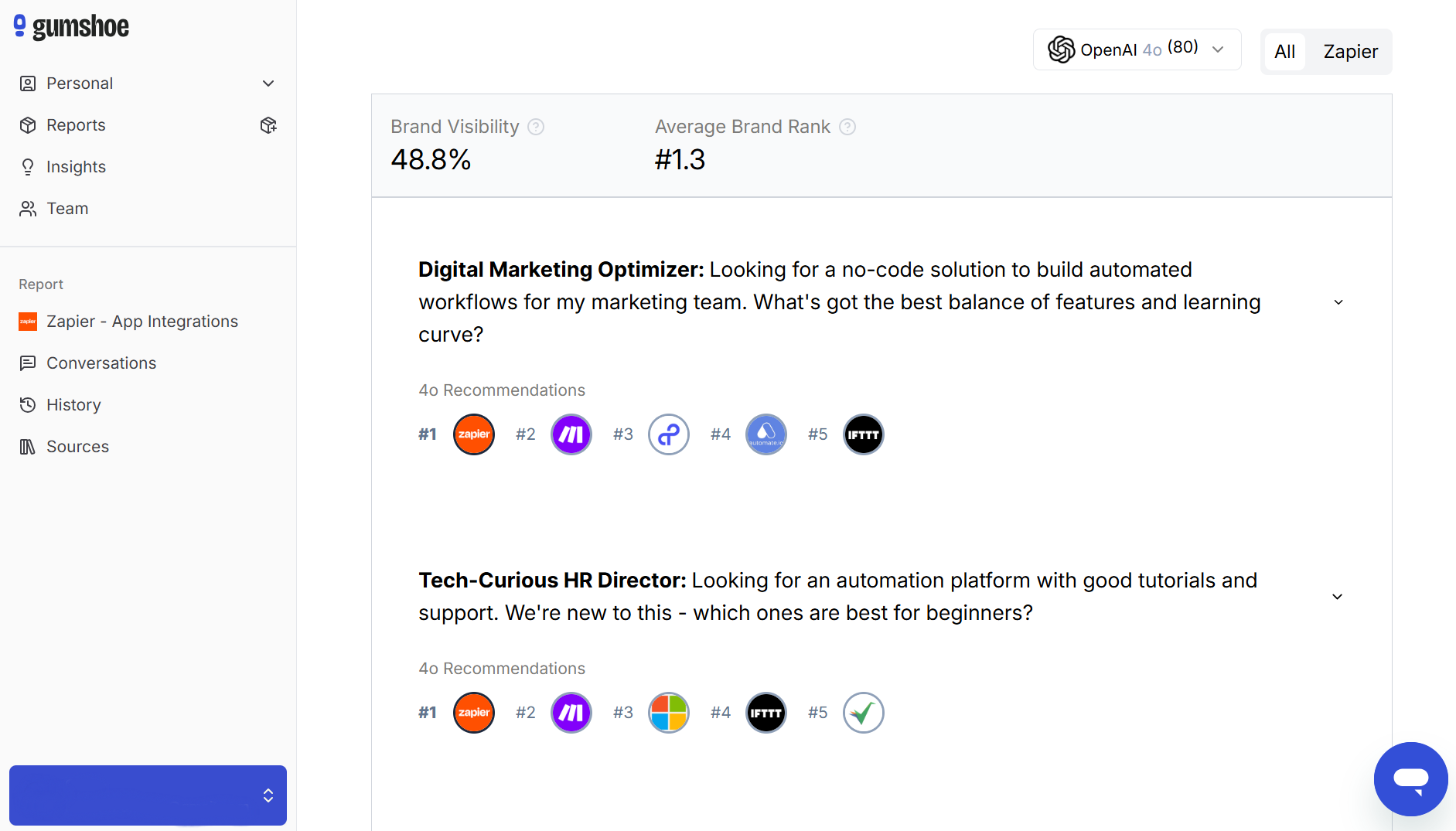
A point to note: although Gumshoe tracks responses from most mainstream AI models, it doesn't for Google's AI Overviews. While Overviews are only an extension of Gemini (which it does cover), most other LLMO tools make it a point to track them separately. Though not exactly a dealbreaker, this does put Gumshoe at a bit of a disadvantage.
5. Nightwatch
Nightwatch is best known as an SEO rank tracker, keyword research, and site audit tool, but it’s also stepped up to include AI search visibility analysis.
To get started, you’ll enter your website URL and a few basic details about your SEO or LLMO campaign. From there, you’ll land on the keywords page, where you can manually enter the prompts you want Nightwatch to track.
While it does auto-fill some suggestions, they’re mostly SEO-focused, which means they won’t always return the kind of responses you’d expect from LLMs. It’s better to enter these manually to get more accurate results.
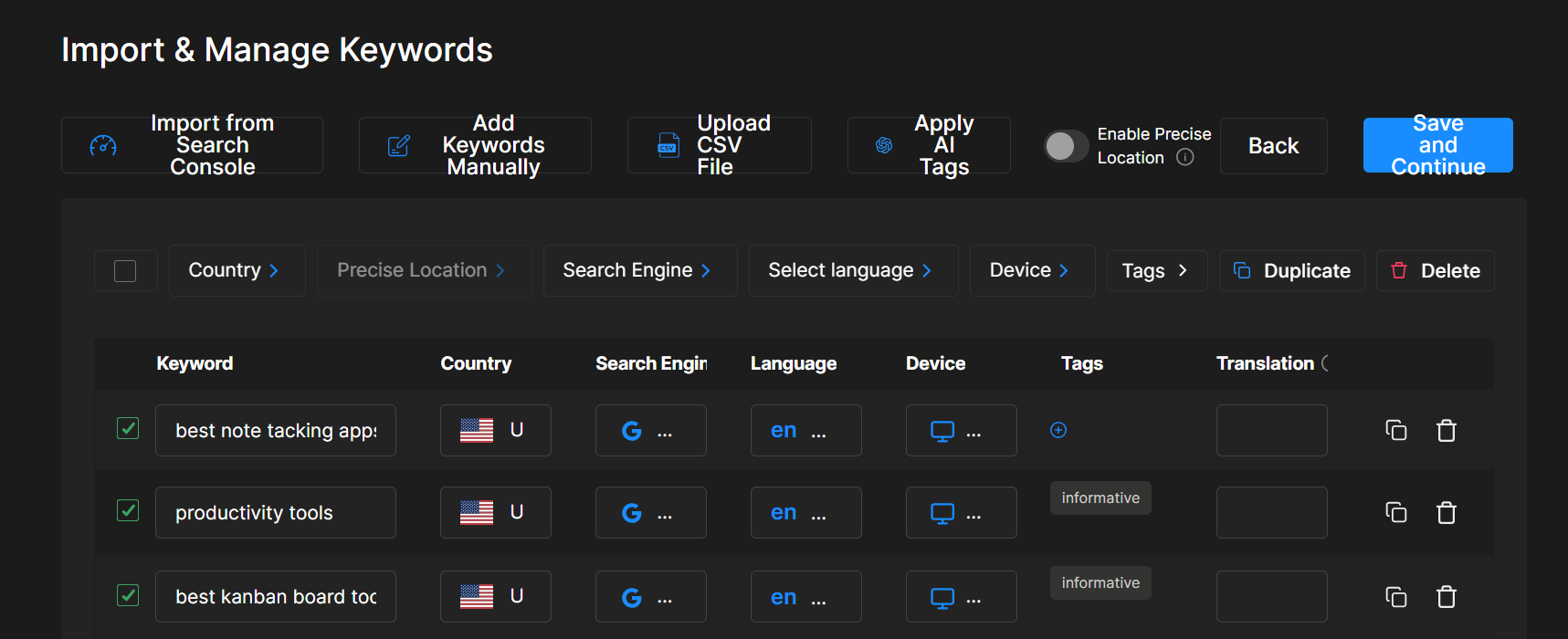
Once you've set up your website, the tool will start tracking the keywords/prompts. Use the filter option and choose LLMs as your target. It’ll then show you the prompts your site is ranking for, and you can click on any one to see the full AI-generated response.
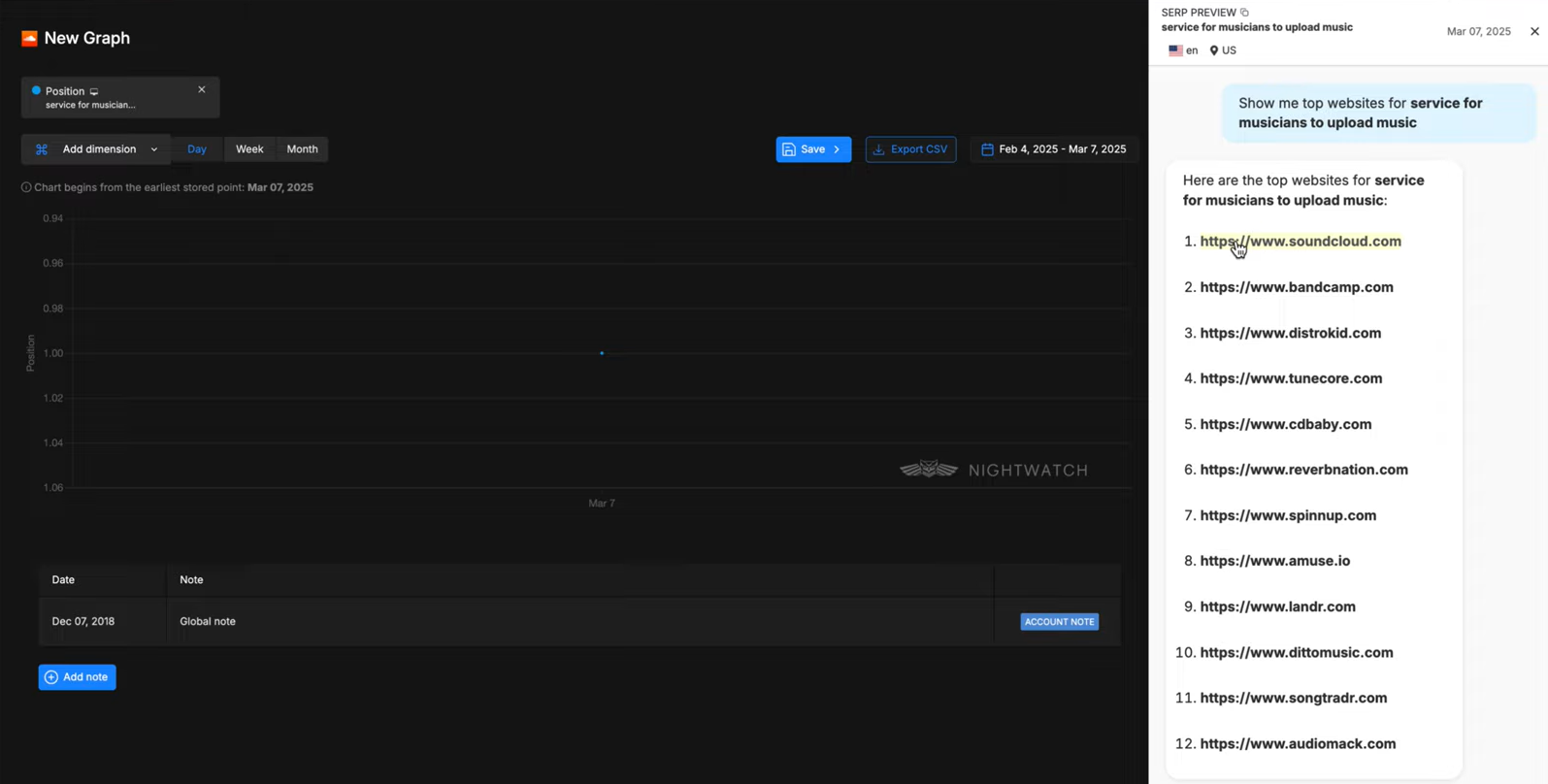
6. Peec AI
Peec AI is another LLM observability tool that helps you track your brand visibility across various LLM platforms.
The platform’s dashboard includes all the essentials. You can view a visibility chart for your brand across different LLM models and track how it’s changed over a selected time period.
You can also compare your performance against key AI search competitors to see how you stack up. To set these up, head to the Competitors tab on the left sidebar. If you’re not sure who to track, Peec AI also offers suggestions to help you get started.
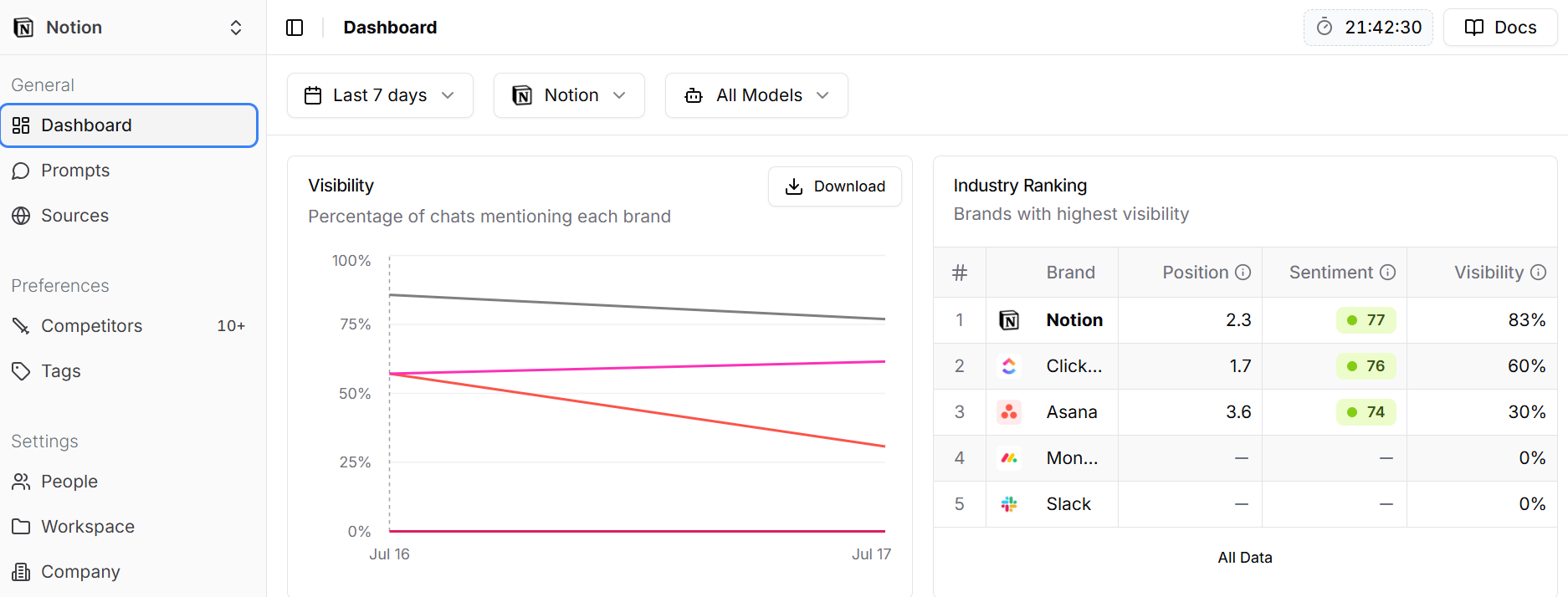
As you scroll down, you’ll see the exact chats where your brand appeared across different AI tools. This includes the prompt used, the generated response, your ranking position, and all cited sources.
For more on these, head to the Prompts and Sources tabs, respectively. In the Prompts tab, you'll get more detail on the queries Peec AI has run across different LLMs. Along with the overview you saw on the dashboard, you'll also find:
- a sentiment score that shows whether your brand was mentioned in a positive or negative light
- a visibility score that shows the average percentage of responses your brand appeared in
- the top-ranking brand for each response
You can also add tags to each prompt here to organize them by topic, type, or any other category that makes sense for your workflow.
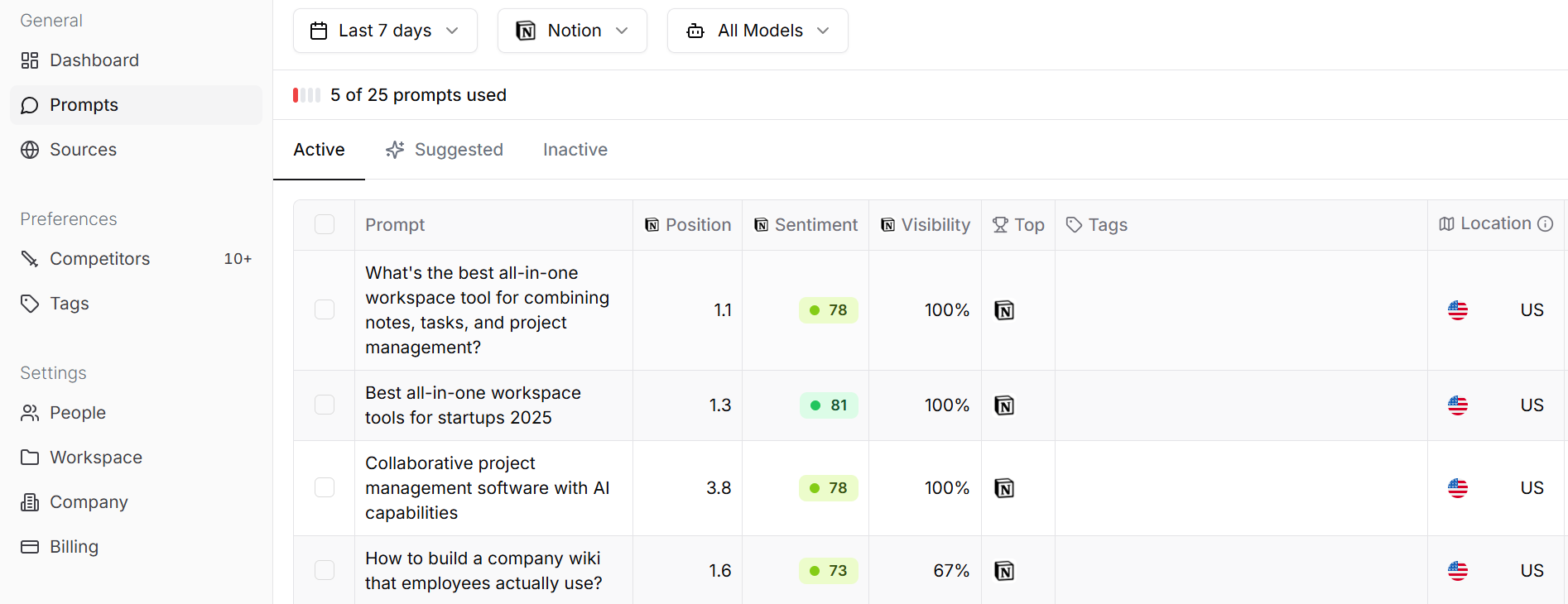
The Sources tab is similar and provides more information on which domains and URLs were cited by LLMs. You’ll see the average percentage of times each site was used as a source, along with a breakdown of specific URLs.
7. Writesonic
Writesonic, along with being an SEO and AI writing tool, has recently introduced an AI optimization feature.
It has a user-friendly interface, with metrics like visibility score, sentiment score, and average position taking up the spotlight on the dashboard. You'll find tables and graphs showing how your brand’s visibility, position, and sentiment have shifted in AI search results over time, along with comparisons against your competitors.
In the Topics and Queries tab, you can also tinker with the prompts Writesonic sends to different LLMs, organized by topic.
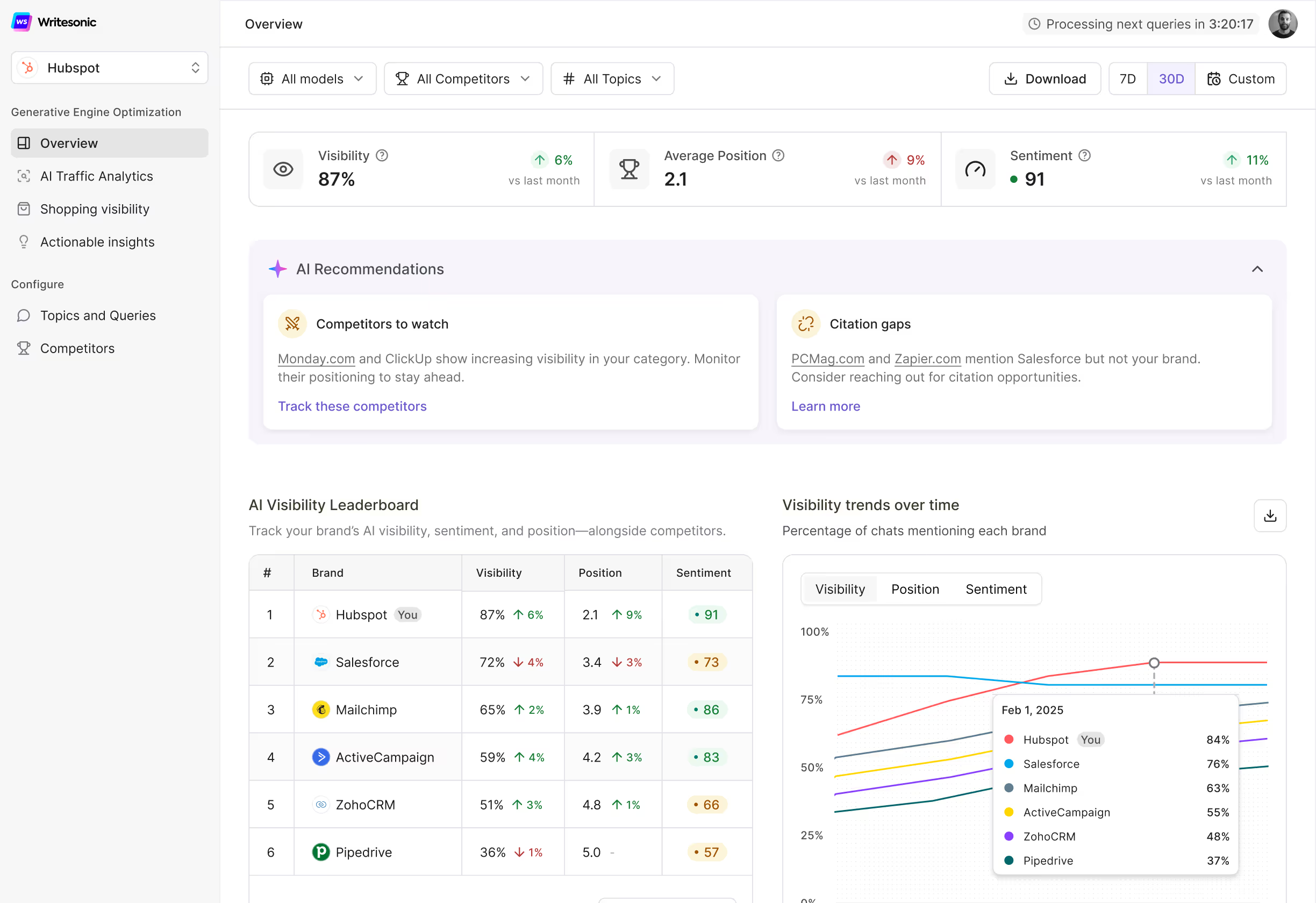
Everything you see in the dashboard overview is also available in more detail across their individual tabs. You can track citations across different tools and AI search engines, see how your sentiment score has changed over time, and more.
Writesonics AI traffic analytics is where you'll notice a difference from other platforms. You can see the total traffic your site gets from AI, broken down by AI crawling your site and human users clicking through the citations they surface.
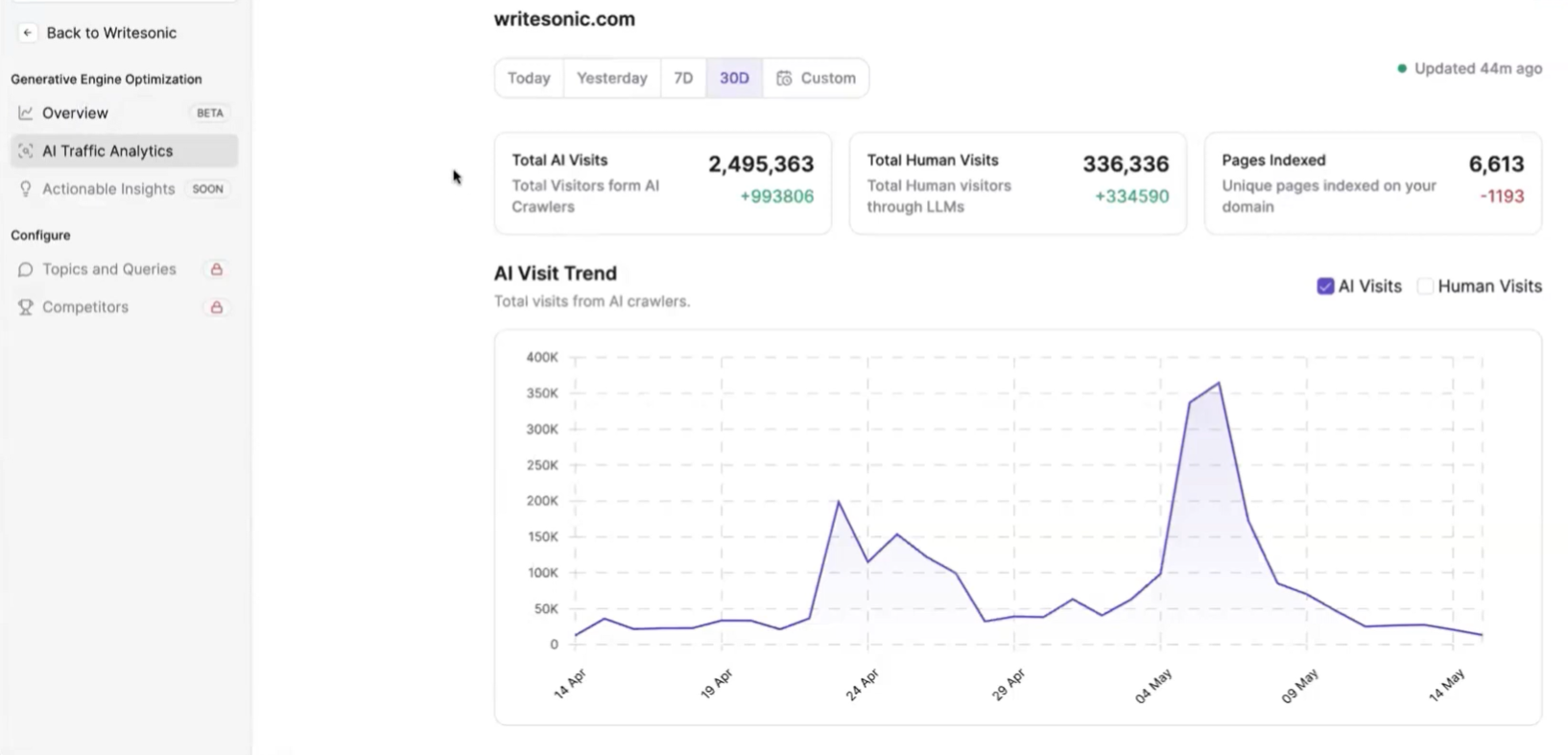
8. Otterly AI
Otterly is another up-and-coming LLMO tool. The upside that makes it stand out from the crowd is that you get more flexibility in which prompts the tool tracks when kicking off your campaign.
You can start with your existing SEO keywords and let Otterly turn them into search prompts, plug in your URL to find prompts already driving traffic, or have the tool discover entirely new prompts that align with your brand.
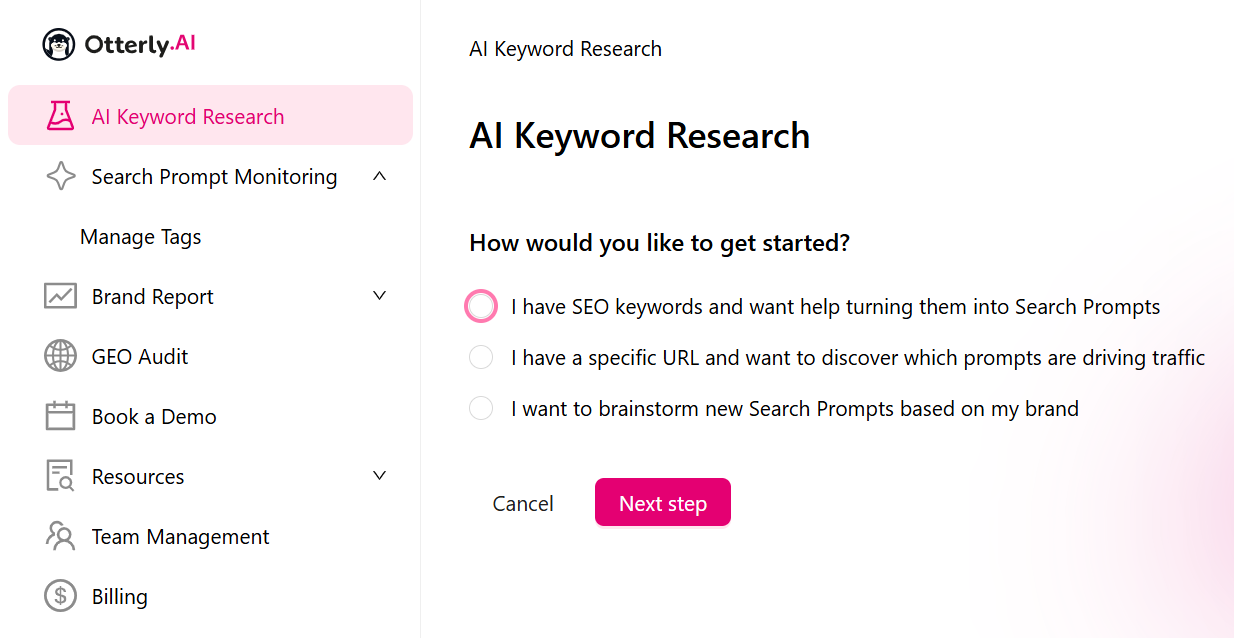
Once the tool finishes analyzing a prompt, you’ll find the results under the Search Prompt Monitoring section. Clicking on any individual prompt shows a snapshot of the LLM’s response, including cited links, sentiment analysis, and where your brand ranks.
Keep in mind, though, that Otterly currently only tracks responses across AI Overviews, ChatGPT, and Perplexity.
For a broader view of your brand’s performance across AI, head to the Brand Report tab. You’ll see insights like total brand mentions, average share of voice, brand position, and how often your domain was cited.
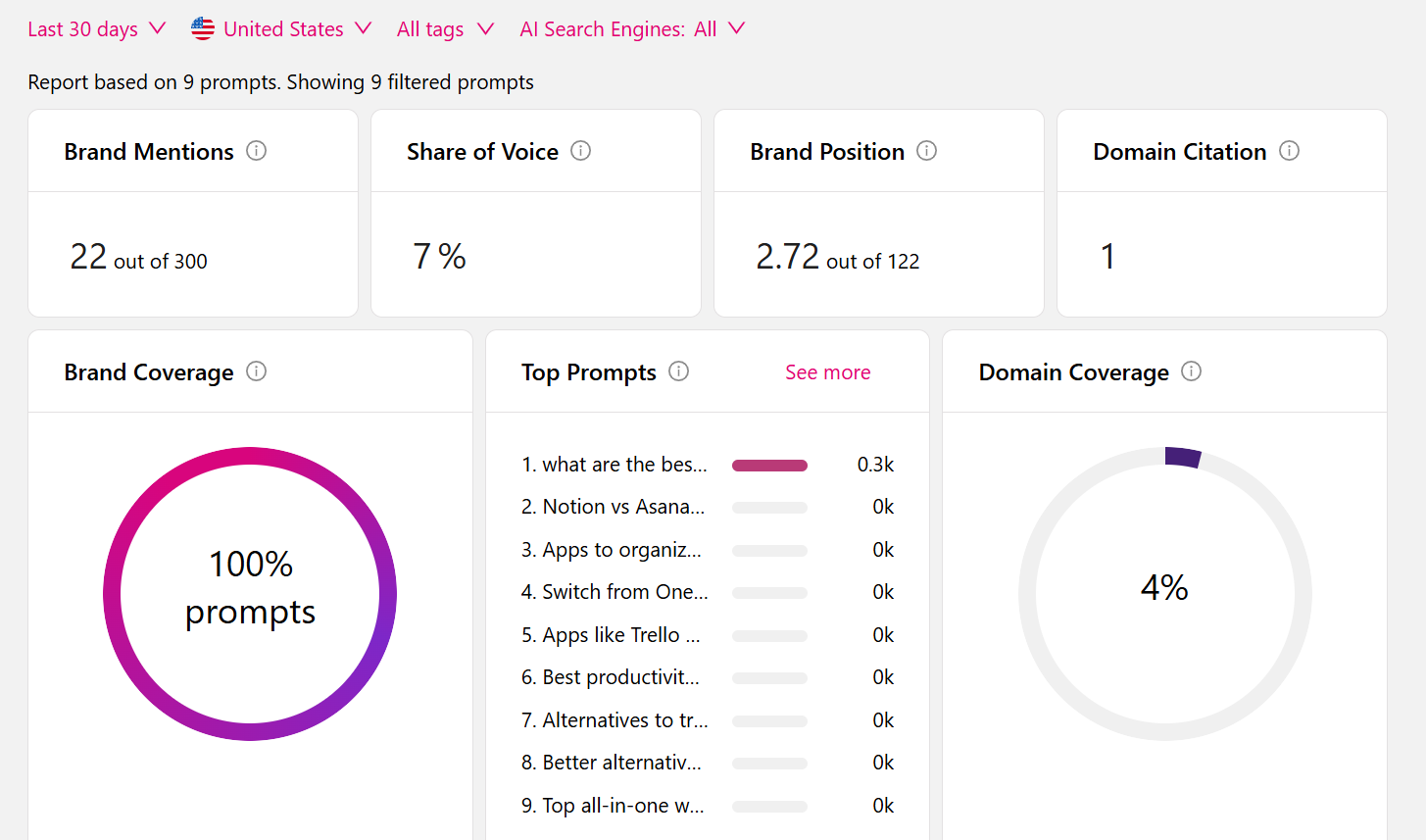
9. Keyword.com
Keyword.com is another SEO-turned-LLMO paltform. So, along with features like traditional SEO rank tracking, you can now keep up with your brand's AI visibility as well.
Like most other tools, you’ll start by setting up an account, adding your website, and entering the prompts you want to track. Keyword.com can also suggest terms if you don’t want to do it manually. What stands out, though, is that you can choose how often to track: daily, weekly, or monthly. Most tools stick to a fixed schedule, so having that flexibility is a nice change.
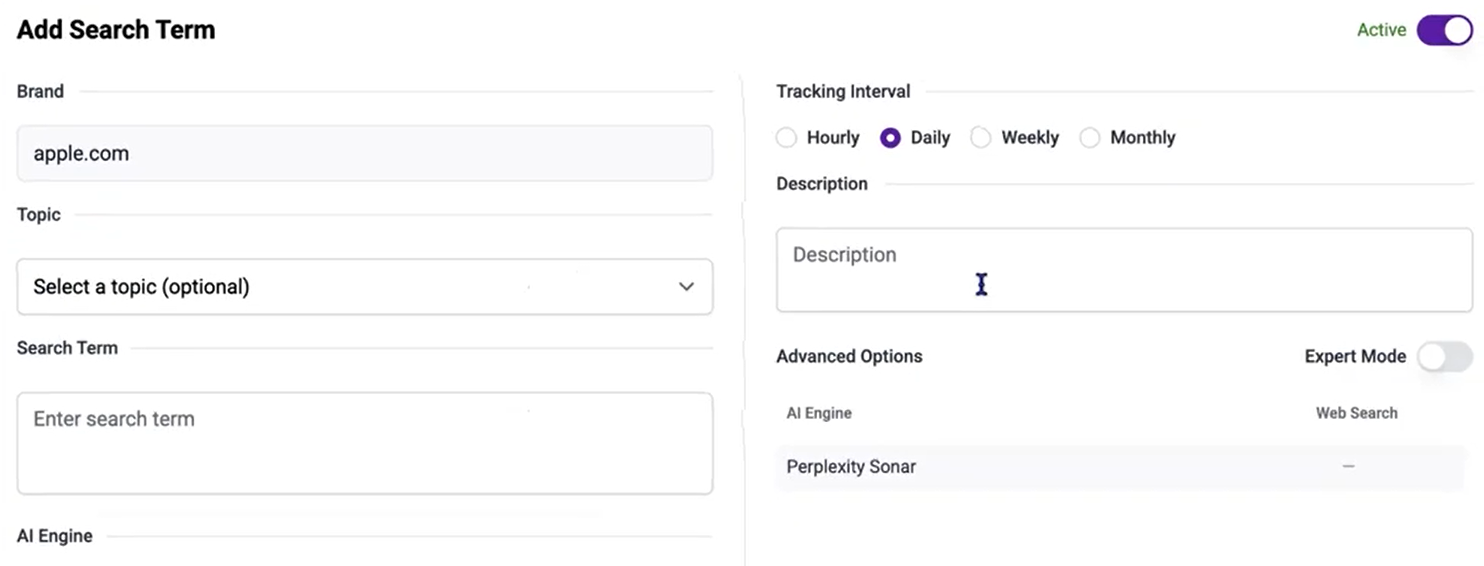
Once done, you can track the individual prompts from the Search Terms tab. Clicking on each search query will reveal details like the visibility score, your ranking position, sentiment score, total citations, and more.
The View Results button on the top right will get you a detailed analysis, including citation data and a side-by-side comparison with your competitors. For a broader assessment of your overall brand, rather than a singular prompt, you can move to the Overview tab.
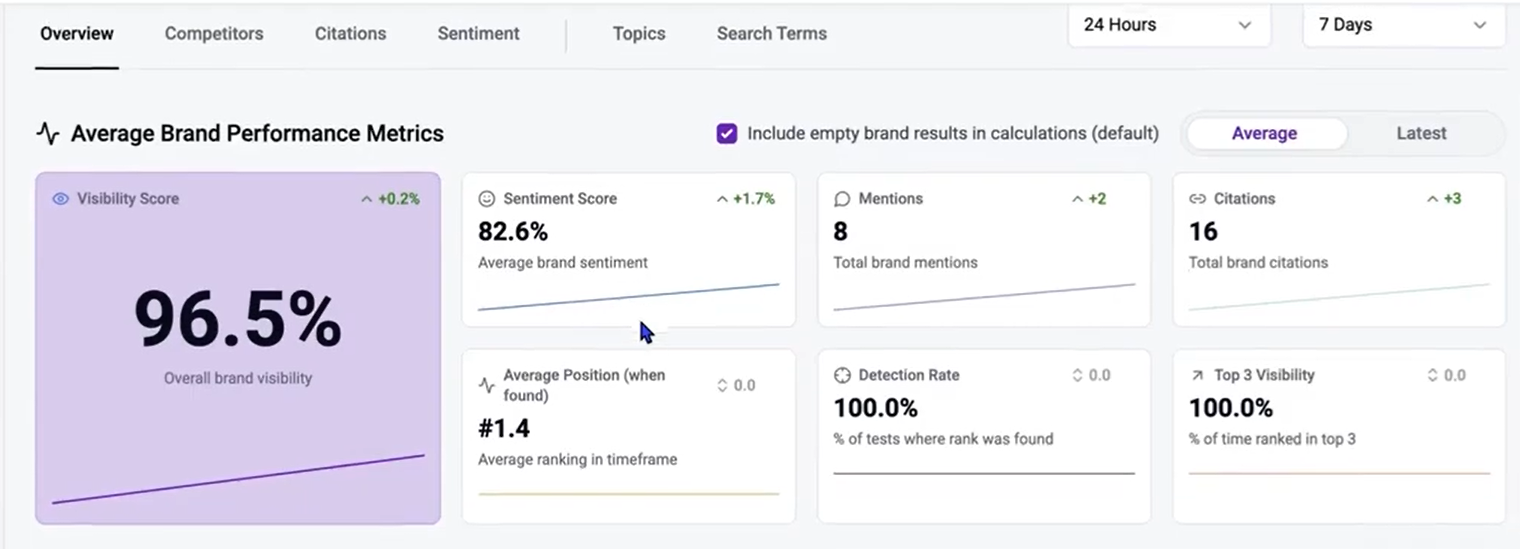
You can also dive deeper into specific areas using the Competitor, Citations, and Sentiment tabs, each of which offers focused insights.
Conclusion
LLM optimization is still very much entangled with traditional SEO. If you want AI tools to cite your content, you usually need to rank well on search engines first.
Most LLMO platforms are useful for tracking AI responses, but they don’t do much to boost AI visibility for your brand. A smarter approach is to choose a platform that supports both SEO and AI optimization.
Surfer has long been a favorite among marketers for SEO, and now, we're expanding into LLMO with the AI visibility tracking tool and more on the way. If you're looking to stay ahead in the AI-powered search landscape, give Surfer a try.





